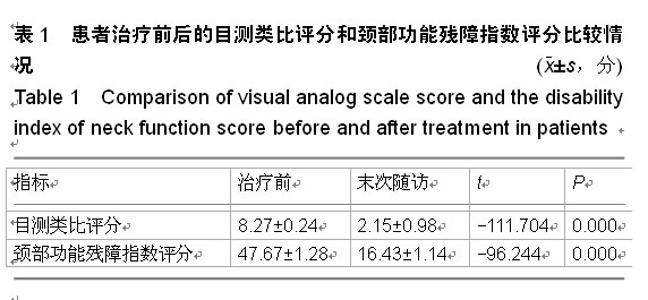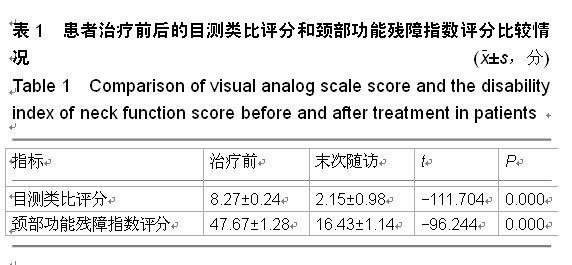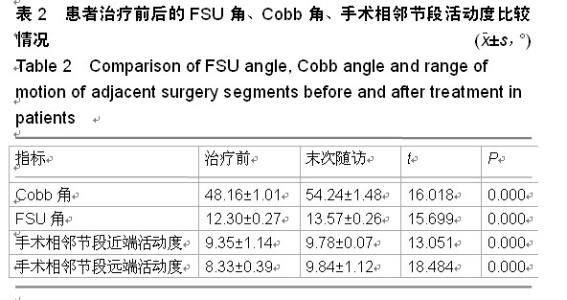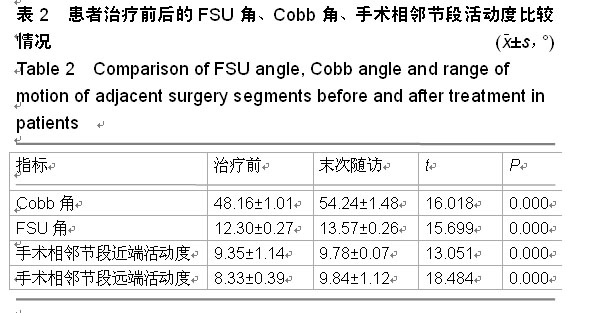| [1] Hedman TP, Kostuik JP, Fernie GR, et al.Design of an intervertebral disc prosthesis.Spine (Phila Pa 1976).1991; 16(6 Suppl):S256-260.
[2] 孙宇.人工颈椎椎间盘置换术[A].2008国际骨科学术研讨会暨北京大学第三医院骨科成立五十周年庆典[C],2008.
[3] Hilibrand AS, Carlson GD, Palumbo MA, et al. Radiculopathy and myelopathy at segments adjacent to the site of a previous anterior cervical arthrodesis. J Bone Joint Surg Am,1999, 81(4): 519-528.
[4] Denaro V, Papalia R, Denaro L, et al.Cervical spinal disc replacement.J Bone Joint Surg Br.2009;91(6):713-719.
[5] Bryan VE Jr.Cervical motion segment replacement.Eur Spine J. 2002;11 Suppl 2:S92-97.
[6] Cunningham BW, Hu N, Zorn CM, et al.Comparative fixation methods of cervical disc arthroplasty versus conventional methods of anterior cervical arthrodesis: serration, teeth, keels, or screws?J Neurosurg Spine.2010;12(2):214-220.
[7] McAfee PC, Cunningham B, Dmitriev A, et al.Cervical disc replacement-porous coated motion prosthesis: a comparative biomechanical analysis showing the key role of the posterior longitudinal ligament.Spine (Phila Pa 1976).2003;28(20): S176-185.
[8] Stieber JR, Quirno M, Kang M, et al.The facet joint loading profile of a cervical intervertebral disc replacement incorporating a novel saddle-shaped articulation.J Spinal Disord Tech.2011;24(7):432-436.
[9] Shin DA, Yi S, Yoon DH, et al.Artificial disc replacement combined with fusion versus two-level fusion in cervical two-level disc disease.Spine (Phila Pa 1976).2009;34(11): 1153-1159.
[10] 任先军,王卫东,初同伟,等.椎间盘置换联合邻近节段Cage融合治疗双节段颈椎间盘突出症的近期疗效[J].中国脊柱脊髓杂志, 2009,19(11):840-844.
[11] Lee SB, Cho KS, Kim JY, et al.Hybrid surgery of multilevel cervical degenerative disc disease : review of literature and clinical results.J Korean Neurosurg Soc.2012;52(5):452-458.
[12] Sekhon LH, Sears W, Duggal N.Cervical arthroplasty after previous surgery: results of treating 24 discs in 15 patients.J Neurosurg Spine. 2005;3(5):335-341.
[13] Phillips FM, Allen TR, Regan JJ, et al.Cervical disc replacement in patients with and without previous adjacent level fusion surgery: a prospective study.Spine (Phila Pa 1976). 2009;34(6):556-565.
[14] Mehren C, Mayer HM.Artificial cervical disc replacement--an update.Neurol India.2005;53(4):440-444.
[15] Nabhan A, Ahlhelm F, Shariat K, et al.The ProDisc-C prosthesis: clinical and radiological experience 1 year after surgery.Spine (Phila Pa 1976).2007;32(18):1935-1941.
[16] Mummaneni PV, Robinson JC, Haid RW Jr.Cervical arthroplasty with the PRESTIGE LP cervical disc. Neurosurgery. 2007;60(4 Suppl 2):310-315.
[17] Kang KC, Lee CS, Han JH, et al.The factors that influence the postoperative segmental range of motion after cervical artificial disc replacement.Spine J.2010;10(8):689-696.
[18] Auerbach JD, Jones KJ, Fras CI, et al.The prevalence of indications and contraindications to cervical total disc replacement.Spine J.2008;8(5):711-716.
[19] Peng CW, Quirno M, Bendo JA, et al.Effect of intervertebral disc height on postoperative motion and clinical outcomes after Prodisc-C cervical disc replacement.Spine J.2009; 9(7): 551-555.
[20] Kim SW, Paik SH, Castro PA, et al.Analysis of factors that may influence range of motion after cervical disc arthroplasty. Spine J.2010;10(8):683-688.
[21] 孙宇.对颈椎前路融合与非融合手术混合应用的初步认识[J].中国脊柱脊髓杂志,2014,24(1):8-9.
[22] 陈道森,施荣茂,周强,等.人工颈椎椎间盘置换联合融合治疗多节段颈椎病的早期疗效观察[J].第三军医大学学报,2013,35(10): 1017-1021.
[23] 李杰,权正学.Hybrid手术在治疗多节段颈椎病中的临床运用[J].重庆医科大学学报,2014,39(8):1136-1138.
中国组织工程研究杂志出版内容重点:人工关节;骨植入物;脊柱;骨折;内固定;数字化骨科;组织工程
|



